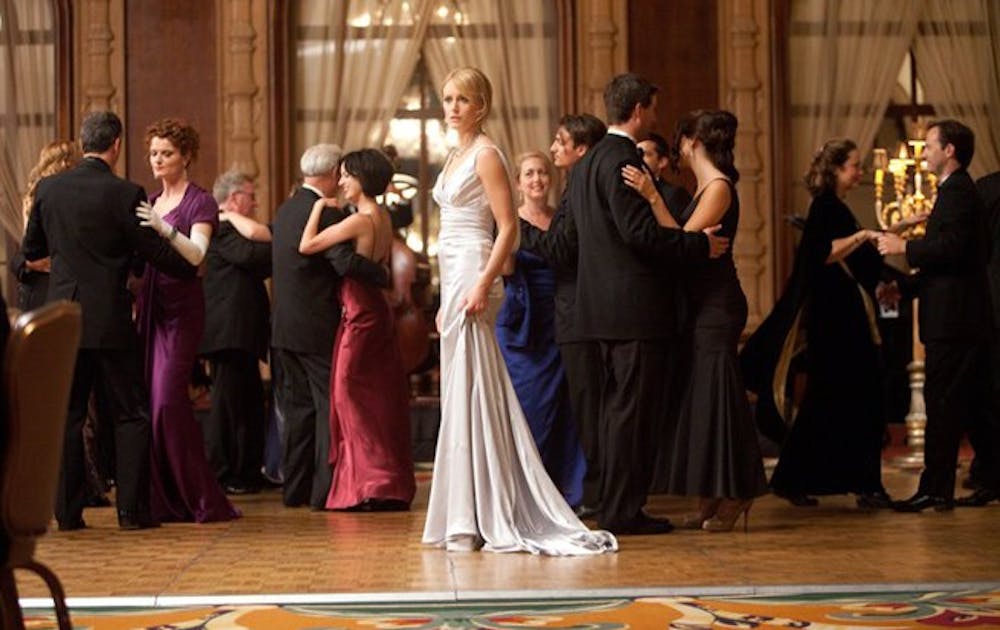If you have seen Atlas Shrugged I, chances are Part II will immediately make you feel uncomfortable. Because straight off the bat it seems as if Eddie Willers—protagonist Dagny Taggart’s long-suffering right-hand man—seems to have suddenly grown a foot, bulked up a good 50 pounds and lost all of his hair to male pattern baldness. And, before you start to wonder what kind of statement the film is making about its token black character, this is mostly due to the fact that the entire main cast has been swapped out between the two films—some more noticeably than others.
But, clumsy casting changes aside, most of the film’s awkwardness come from its insistence that you get its message, message, message. Even the most commonplace scenes—a wedding toast—become set pieces for lectures. Its attempts to strike emotional chords are mostly heavy-handed.
Part II picks up after the previous film leaves Dagny (now played by Samantha Mathis) disheveled and screaming the word “Nooo!” in front of a burning oil field. Since then she has regained her composure. In a world of inept people, Dagny operates like a cold one-woman efficiency machine, solving her company’s problems as the COO of the Taggart International Railroad Company. Meanwhile she’s also chasing for the answer to the overarching mystery of why “good men” (and they are all men) have been spontaneously vanishing all across the country.
In what seems to be a nod to the recent Occupy movement, there is a smattering of protestors everywhere. Although their purpose is unclear—they protest things seemingly at random—they operate as a sort of overused, clumsy cinematographic exclamation mark whenever there are major plot events.
When Ayn Rand was approached about a film adaptation for Atlas Shrugged in 1972, she described the love story between Dagny and steel magnate Henry Rearden as “all [the story] ever was.” And the movie does become much more interesting when it considers the relationship that underpinned the books. The most complicated relationship, however, is not the one between Dagny and Henry, like Rand thinks, but the one between Henry and his wife. Whereas the Dagny-Henry relationship is so filled with business-like conversation that it seems more like a corporate merger than an extramarital affair, Henry and his wife have a strange and yet human relationship.
For a film that mostly takes place in twentieth-floor offices, Atlas Shrugged II has a more bright and modern look compared to the dark, wood-paneled sets of the previous film. There are also some decent CGI set pieces that are mostly believable. Overall, if it weren’t based off a novel that happens to be politically relevant right now, AS II would be another forgettable, superficial film with a pretty good-looking cast of forty-somethings.
Many people have strong reactions to Atlas Shrugged, one way or the other. But I see the film as something like a more politicized Hunger Games, if you will—except Peeta is a married man and there are long speeches criticizing dependency. Like The Hunger Games, the film has a simplistic moral and the occasional unrealistic sci-fi throw-in. To watch the film, suspend your disbelief: at least it’s not as out-there as having children fighting to the death on what is basically PBS. It’s the kind of mediocre film that shouldn’t have—but almost certainly will have—a Part III.
Get The Chronicle straight to your inbox
Signup for our weekly newsletter. Cancel at any time.

